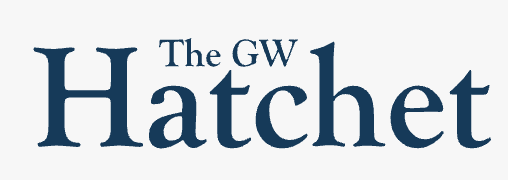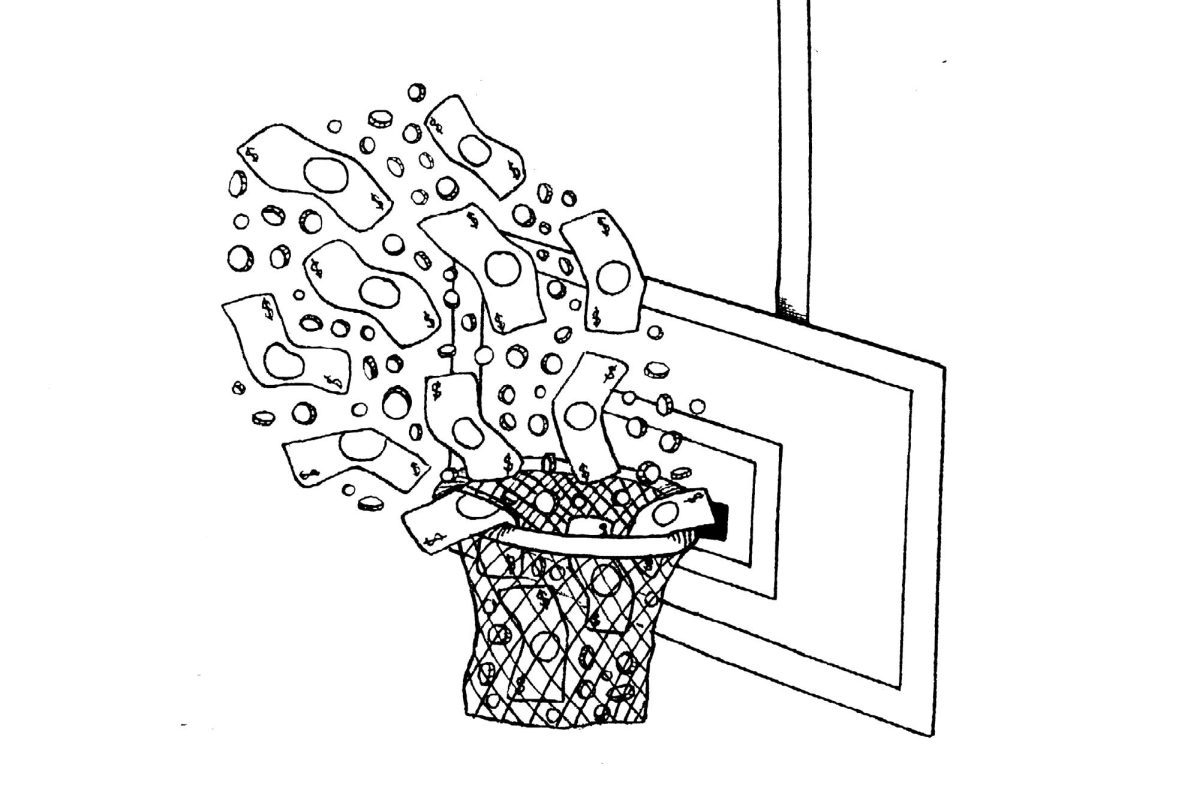Many GW students aren’t sports buffs.
Some of us may not jump at the opportunity to attend free basketball games or dive into a swim meet, but it is undeniably true that college sports bring in money and prestige. GW has to compete with the money that other schools rein in from name, image and likeness — an athlete’s legal commercial right to their image — to recruit and retain some of the best players out there.
Sports are essential to bolstering GW’s applications, community involvement, money and overall status. But before officials start investing more dollars into basketball programs to keep up with the University’s demand for players, we have to start small. To improve the status of our basketball program or other sports programs, we need to first focus on engaging the GW community to attract students and alumni with deep pockets, forging a path for GW to invest in the future of its athletics.
Some of the best basketball programs, like this year’s Duke University team led by standout Cooper Flagg, have massive and loyal fan bases, bringing in a stronger sense of community among students, families and alumni and significant revenue. Fanaticism is a step toward more financial support. The average attendance in the Smith Center this season for men’s basketball games was 1,869 people and for women’s basketball, 479 — not even filling half of the center’s 5,000 seats.
NIL has allowed athletes to earn money commercially through their image and likeness through projects, like brand deals, and universities then pour millions of dollars into their athletics programs and athletes to represent their universities. GW has an official NIL collective, Friends of George collective, that aims to provide NIL opportunities to GW athletes and benefits for its members, usually students or alumni. The University has overall spent more than $4 million on its men’s basketball program this season but there are athletes at other schools receiving NIL offers in the hundreds of thousands of dollars alone — even millions in some cases. It would be extremely difficult for GW, a mid-major athletic program, to compete with a high-major basketball program in the increasingly dicey game of retention and recruitment.
GW will lose out on recruits who are taking up more enticing offers if GW doesn’t contribute more money and energy to our athletics. The transfer portal incentivizes athletes to program-hop in search of teams that rake in more wins and NIL money. The University shouldn’t try and ignore these realities — they’re here to stay and are ultimately a part of athletics’ competitive landscape. And if GW started investing significantly more money into our basketball programs to get into bigger leagues, its efforts might not come to fruition because of the bedrock of limited enthusiasm that many community members give to sports programs at GW. It’s also admittedly not the most appropriate time to pour funds into athletics, given the widespread budget cuts threatening university academics and research, the beating hearts of higher education.
To eventually attract investment into our athletics program, we must significantly expand its visibility and audience reach. We need to start by building upon GW’s existing efforts to do so. Basketball games are free for students, which isn’t usually the standard with more elite teams, and GW Athletics staff give away iPads or scooters at games in hopes of filling seats. GW tries to make halftime shows more attractive by hosting corgi races and bringing in various entertainers. Yet, attendance is still low. It’s not working well enough.
GW has the right idea — officials understand the necessity of building community interest for our athletic programs, or at least our basketball program, to keep growing. George’s Army, the official student section for GW sports, tries to motivate the student body to attend games by having themes, like “Superhero Day,” or specific dress codes to foster a sense of community at games. But so far, its attempts haven’t had a large enough impact to help expand the presence of our athletic programs.
Instead of just offering to give away a prize worth hundreds of dollars, GW can instead have events like tailgates — which the University has successfully hosted a few times in the past — that the general public would get excited about.
Winning teams will also attract more students to GW and catch the attention of more alumni and donors. This season, men’s basketball had 21 wins, the most since 2016, which sets up a solid foundation for the rest of the GW community to rally around its basketball team. GW should schedule competition against more competitive programs with name recognition — games that students and other members of the community would be more interested in attending over weak, cupcake-y nonconference matchups.
In earlier seasons, GW has had more attention-grabbing exhibitions, like hosting Power 5 opponent University of South Carolina in 2022, an event that was nationally televised and GW actually managed to grab a win. The game was the second-most attended game of the year, with 2,216 attendees and managed to bring in 10 NBA scouts to the Smith Center to scope out players of the opposing team — who then have the opportunity to watch our teams too.
If we boost the amount of money funneling to athletics, there’s room for the rest of the University to benefit. But first, officials must effectively address the GW community’s avoidance of athletics.
The editorial board consists of Hatchet staff members and operates separately from the newsroom. This week’s staff editorial was written by Opinions Editor Andrea Mendoza-Melchor, based on discussions with Contributing Culture Editor Caitlin Kitson, Research Assistant Carly Cavanaugh, Copy Editor Lindsay Larson, Contributing Opinions Editor Madie Turley, Culture Editor Nick Perkins and Sports Columnist Sydney Heise.



